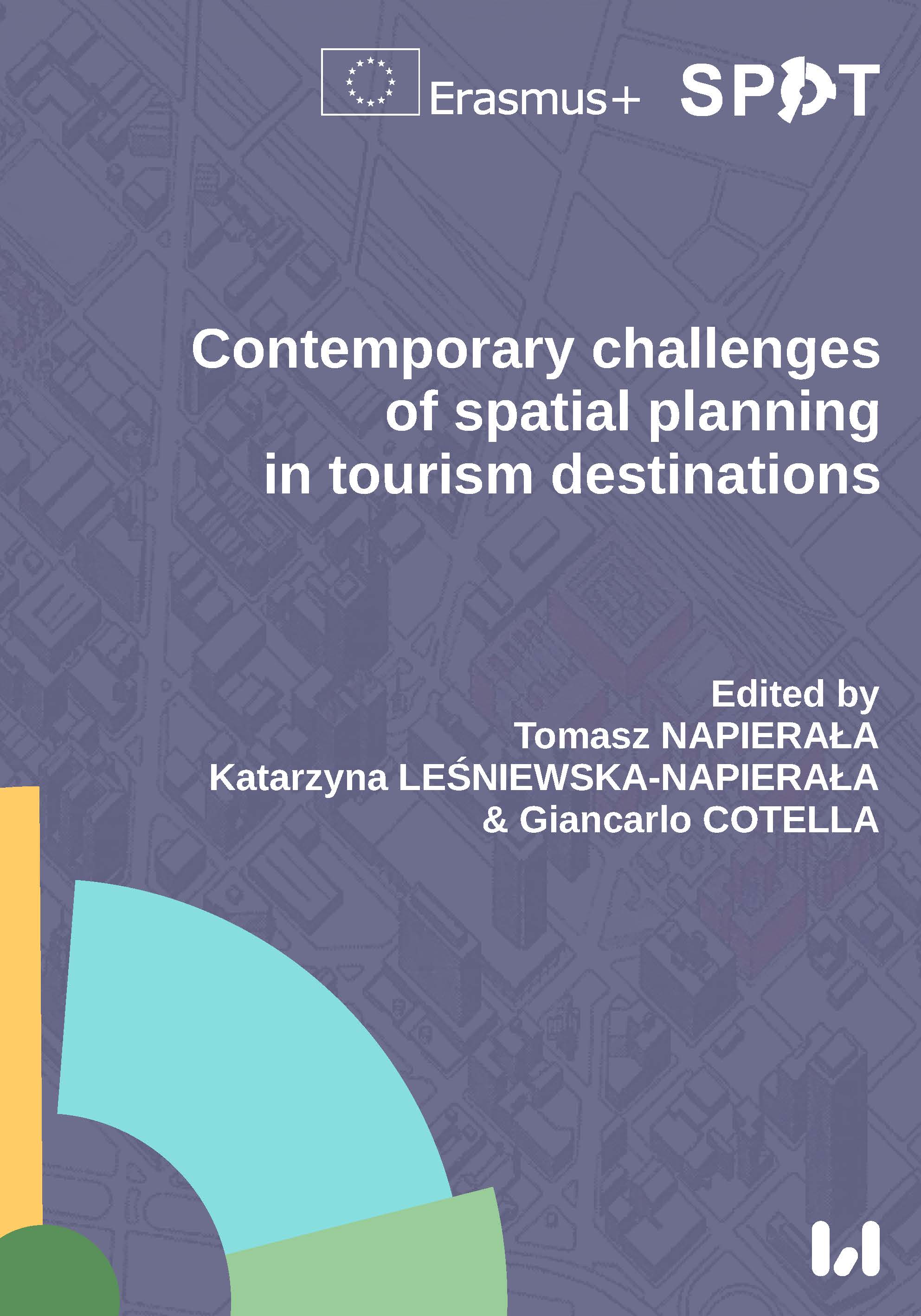The spatial planning system in Poland. Focus on tourist destinations
The spatial planning system in Poland. Focus on tourist destinations
Author(s): Katarzyna Leśniewska-Napierała, Iwona Pielesiak, Jacek Kaczmarek
Subject(s): Geography, Regional studies, Regional Geography
Published by: Wydawnictwo Uniwersytetu Łódzkiego
Summary/Abstract: This report offers insight into contemporary problems that space planning and sustainable tourism development are faced with in case of Poland, a CEE country with a turbulent history of socio-economic and political changes that have taken place over the last few decades. Key challenges that are being observed range from legal and organisational issues to those related to social change and economic efficiency. Furthermore, transport accessibility has increased to an unprecedented degree, and new technologies have been adopted in daily life on a massive scale. Therefore, the need for innovative approach ought to be recognised and properly addressed.
One of the main problems is the lack of planning integration relating to the different aspects of development, namely socioeconomic planning, spatial planning, tourism planning, and planning for natural environment and cultural landscape. Moreover, institutional obstacles have further restricted the effectiveness of modern spatialplanning in Poland. That is, among others, rigid (inflexible) administrative division of the country. It is highly unlikely that this one will be reformed, at least in a medium-term perspective. Hence, its impact should be considered a permanent challenge. When it comes to issues of social and economic nature, it is worth emphasising that those are often common in countries other as Poland. That includes the tendency to seek new spaces for exploration, as tourism often becomes the primary source of income for people inhabiting places that traditionally were considered unattractive. The same refers to increasing the competitiveness of small and medium-sized enterprises, which remain the basis for the functioning of the tourism sector. Among other factors changing the conditions for tourism, while remaining key phenomena for spatial planning, there are new consumer habits and the shortening of the geographic distance. Both require strong focus on developing innovation and digitisation.
The last challenge to be mentioned, however, and an extremely important one from the point of view of the objectives of the SPOT project, is the diversification of the tourist offer as opposed to the development of mass tourism observed so far. The impact of the latter is completely divergent from the principles of sustainable development, while in case of diversification, new opportunities appear that may become a solution for at least some of contemporary ethical dilemmas.
Book: Contemporary challenges of spatial planning in tourism destinations
- Page Range: 61-90
- Page Count: 30
- Publication Year: 2022
- Language: English
- Content File-PDF

